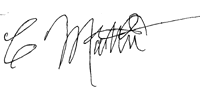|
|
||||||
 |
||||||
WHAT NITRO RACING SHOULD LOOK LIKE More than once, I've taken time off to bash the appalling lack of competition in the pro nitro ranks. In Top Fuel, I'd say something along the lines of the class being one with only five serious contenders with the remainder riding along for a punchout. In Funny Car, I'd say four multi-car teams make up well over half the field, creating the same situation. This begs the questions: "Okay Einstein, things aren't so hot, what would you do or what would an ideal situation look like?" To the first part of that query, I really have no idea because the situation is dominated by money. I'd say somehow, someway, money has got to filter down to the other 20 cars (or so) in the nitro eliminators so they have a running chance against the Bernsteins, Dixons, Forces, and CSKs. If not, the sport will suffer greatly. It will become boring and predictable. Just imagine a NASCAR where only five cars routinely ran away from the field ... ho frigging hum. However, I do have a very definite idea of what a healthy situation looks like in pro nitro racing, and you have to look no further than the contemporary alcohol ranks. Now I know some will stop me right there and say, "What healthy situation in the alcohol ranks? Alcohol is not contested at six races on the NHRA national event schedule because they can't fill the fields at those sites." And that's true. However, at the sites they do fill the fields, the situation is quite the reverse. At those sites, the fields are not only filled, but, as at the NHRA 75th Anniversary Craftsman Nationals at Joliet, Ill., filled to excess. Rather than go on with endless comparisons, I'll stick with the Alcohol Dragster class at Route 66 Raceway. I'll admit it was a special group, record bubble and all that, but the whole reason I'm using it is to say this is what a healthy, quick and fast eliminator should LOOK like, top to bottom. And what about that Alcohol Dragster field? If Top Fuel were represented as well as that clan was, these really would be "the good old days" for the nitro-burners. A potent 36 cars battled it out for 16 spots and, thanks to the excellent traction and weather, the best racing of the event was held. No question about it. How would you like to be Shawn Bowen and have your A/Fuel Dragster run a 5.496/266.11 and earn first alternate status? Or Todd Datweiler with a second alternate 5.497/253.57? Or Doug Foley's third alternate 5.503/257.48. As for those who did make the field, a group stretching from Gary Ormsby Jr.'s outrageous 5.173 to Russ Lindert's bubble 5.464 is sensational qualifying. Of the 36 cars at Joliet, 30 were in the 5.70s or lower. And the racing? Even better. Former Super Comp/Super Gas racer Steve Federlin got rid of past national event winners Dave Hirata, Mitch Myers and Ormsby to meet and beat first-time finalist Kenny Perry in the money round. In much the same fashion as Federlin, the Toronto, Canada driver took off past national event winners Jeff Wilson, David Wells, and Shelly Howard to earn his moment in the sun, as eclipsed as it was. Who could ask for more, competition-wise? The second five-teen in Alcohol Dragster racing, the quickest field, an alternate group that would've made up a good second 16-car field, 270-mph speeds. A new finalist. And take a hard look at the field. In the past five years an incredible new group of talent has emerged. For those of you who know alcohol, tell me what Craftsman qualifiers Duane Shields, John Haley, Myers, or new 2002 Alcohol Dragster POWERade Alcohol Dragster champ Art Gallant were doing. Gallant was racing jets, Shields may have just been getting started, and the others...who knows? Stopping at traffic lights like the rest of us. If you go down a step to the Divisional Alcohol Dragster level, the amount of new talent is outstanding and has to impress anyone with even a minor league knowledge of drag racing. Who were Billy Gibson (Division 1), Jason Cannon (Division 2), Haley, James Copeland II (Division 4), Karl Brounkowski (Division 4), Paul Jones (Division 5), Lee Callaway (Division 5), Brandon Johnson (Division 6), Gregg Lawrence (Division 6) and Don Hudson (Division 7), five years ago? Check-out clerks at the local Wal-Marts? I realize that at outposts like Memphis there are not as many of these cars. In an Alcohol-rich area like Division 3 or Division 7, one can expect or have good reason to expect quality fields as the above. But again, I am focusing on appearances. This is a whiner trying to descibe a winner. For me, 2002 has been Top Fuel -- "The Kings of the Sport" according to the Diamond P video archives -- at its worst, save only for the first half of 1984 when the NHRA Summernationals could only draw 11 cars for the first round. There was a reason for that, to a degree, because the Orwellian '84 season was at the height of the big switch to Funny Car for a lot of the numerous pro nitro teams. Something's gotta be done to rectify this current situation. Sometimes, along with the money (It's always the money. Is capitalism lame or what?), the troubled need a target. In NHRA drag racing and for the nitro classes in general, they need look no further than the Alcohol Dragster ranks (and to Alcohol Funny Car at certain races) on a clear day.
|
||||||
|
Copyright 1999-2002, Drag Racing Online and Racing Net Source |
|
|||||
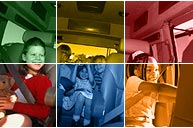
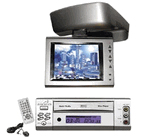
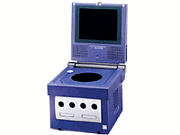

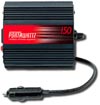
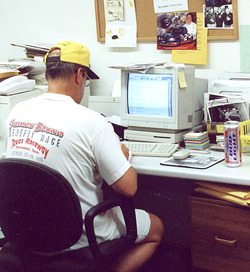 photo by Jeff Burk
photo by Jeff Burk
